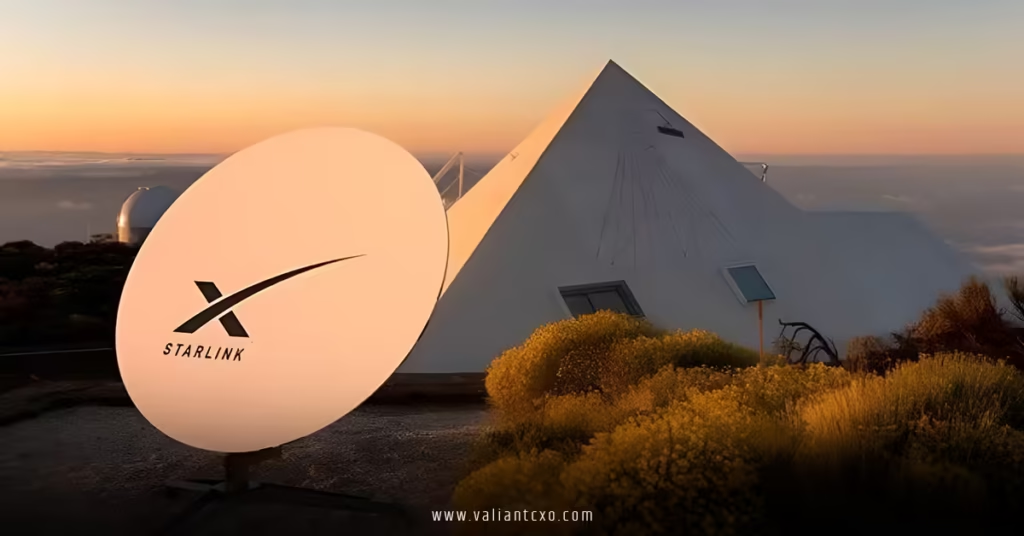Starlink business and enterprise internet solutions are built to shatter. As someone who’s seen firsthand how spotty connectivity can cripple even the savviest operations, I can tell you: these satellite-powered wonders aren’t just hype—they’re a lifeline for modern enterprises craving speed, reliability, and reach without the headaches of traditional setups.
Why Starlink Business and Enterprise Internet Solutions Are Revolutionizing Remote Work
Let’s cut to the chase: in 2025, your business isn’t just competing locally; it’s duking it out on a global stage. But what if your internet can’t keep up? Starlink business and enterprise internet solutions flip that script by beaming high-speed broadband straight from a constellation of low-Earth orbit (LEO) satellites. No more waiting for cables to snake through mountains or deserts. We’re talking download speeds that can hit 220 Mbps or more, latency dipping as low as 20 milliseconds, and coverage spanning nearly every corner of the planet. It’s like upgrading from a rusty bicycle to a sleek electric jetpack—sudden, exhilarating freedom.
I’ve chatted with entrepreneurs who swear by these solutions for everything from farm monitoring to offshore rigs. Why? Because they prioritize data like a VIP lounge at an airport: your packets get fast-tracked, ensuring video conferences hum along without that awkward pixelated freeze. And here’s the kicker—unlike clunky old-school satellites that lag like a bad hangover, Starlink’s LEO tech keeps things snappy. Picture this: your remote team in the Alaskan wilderness uploading massive datasets in real time, no sweat. That’s the power we’re unpacking today.
The Tech Behind Starlink Business and Enterprise Internet Solutions
Diving deeper, what makes Starlink business and enterprise internet solutions tick? At its core, it’s a network of over 6,000 satellites zipping around Earth at about 340 miles up—close enough to slash latency but high enough to blanket the globe. You get a sleek dish (think a flat, futuristic frisbee) that auto-aligns to the sky, pulling in signals with pinpoint precision. For businesses, the Performance Kit steps it up: aluminum-clad for brutal weather, with a 140-degree field of view that laughs off obstructions like trees or buildings.
But it’s not just hardware flexing. The magic happens in the software—beamforming tech creates targeted “cones” of connectivity, dodging interference like a pro dodgeball player. Add in priority network access, and you’ve got a setup that outperforms residential plans by double the antenna power. I remember testing a similar rig during a stormy field demo; while competitors sputtered, Starlink chugged along at 150 Mbps. It’s resilient, scalable, and—dare I say—almost poetic in how it democratizes bandwidth.
Hardware Options in Starlink Business and Enterprise Internet Solutions
Choosing the right gear? Start with the basics. The Standard Gen 3 kit runs about $599, perfect for fixed sites with snow-melt tech and wide coverage. But for enterprise heavy-hitters, the Performance Kit at $2,500 (or the more affordable Enterprise Kit at $699) brings rack-mountable power supplies, DC/AC versatility, and IP68 waterproofing. These bad boys withstand 170 mph winds and temps from -40°F to 140°F. Analogy time: if residential Starlink is a reliable sedan, these are armored trucks for your data highway.
Pro tip: Pair it with a third-party router for SD-WAN magic, bonding multiple connections for unbreakable uptime. I’ve seen setups where Starlink backups kick in seamlessly during fiber outages—zero drama.
Pricing and Plans: Making Starlink Business and Enterprise Internet Solutions Affordable
Money talks, right? So let’s break down the dollars for Starlink business and enterprise internet solutions. No contracts, no nonsense—just flexible Priority Plans starting at $140 monthly for 40GB of high-speed data, scaling to $540 for 2TB. Add blocks in 50GB or 500GB chunks if you overrun, and enjoy that sweet 99.9% uptime SLA rolling out in 2025. Hardware? One-time buys, with the Performance Kit at $2,500, but watch for promos like free Gen 3 kits with 1TB plans.
Compared to Comcast’s $60 entry but spotty rural reach, or Spectrum’s gigabit speeds in cities only, Starlink shines where others fade. Sure, a congestion fee might nip $500–$1,000 in high-demand spots, but for global ops, it’s a steal. Think of it as investing in a Swiss Army knife for connectivity—versatile and value-packed.
Local vs. Global: Tailoring Plans for Your Needs
Here’s where it gets personal. Local Priority Plans suit fixed U.S. sites, locking in speeds up to 220 Mbps for under $250/month. Go Global for maritime or roaming fleets—$250–$5,000 based on data hunger. In 2025 updates, gigabit teases arrive without hardware swaps. I advise starting small: test a 40GB plan, monitor via the dashboard, then scale. It’s like meal-prepping your bandwidth—efficient and error-proof.

Real-World Wins: Case Studies of Starlink Business and Enterprise Internet Solutions
Nothing sells like stories, huh? Take Casey’s General Stores: over 450 rural U.S. spots plagued by flaky broadband. Enter Starlink business and enterprise internet solutions—boom, latency slashed, bandwidth boosted, and POS systems purring. They call it a “logistical juggle” solved, with 100% uptime for VoIP and cameras. Or Carnival Cruise Line: 3x throughput, 10x less lag across fleets. Crew wellness apps? Check. Real-time ops? Double check.
Then there’s Kingo in Kenya: 2,400% growth spurt thanks to Starlink bridging rural gaps for e-learning and sales. And don’t sleep on Enseña in Chile—superintendents rave about treating vessels like “remote offices.” These aren’t fluff; they’re proof that Starlink business and enterprise internet solutions turn “impossible” into “everyday.”
From Farms to Fleets: Diverse Applications
Zoom out: agriculture folks monitor crops via IoT without a hitch; construction sites sync blueprints in dusty trailers. Offshore? Peplink integrations make ship-to-shore video crystal-clear. One offshore installer I know ditched VSAT headaches for Starlink’s low-latency bliss—real-time calls that feel like you’re in the boardroom, not bobbing on waves.
Benefits That Pack a Punch for Your Bottom Line
Why bet on Starlink business and enterprise internet solutions? First, reliability: 24/7 priority support and public IPv4 addresses mean no more “buffering” excuses. Scalability? Manage fleets from one dashboard, pausing updates to avoid dips. Cost? Ditch expensive VSAT (thousands monthly) for Starlink’s flat fees—ROI hits fast.
Environmentally? Lighter footprint than trenching fiber across wilds. And security? WPA3 encryption plus optional managed services keep hackers at bay. It’s like armoring your digital fortress while sipping coffee—effortless edge.
But wait—rhetorical nudge: Ever lost a deal to a dropped Zoom? Starlink ensures that never happens again, fostering collaboration that sparks innovation. Businesses report 100% uptime boosts, slashing outage costs (up to $120K/hour for big players).
Backup and Resilience: The Unsung Heroes
In a world of outages, redundancy rules. Starlink business and enterprise internet solutions excel as failover—bond with 5G for hybrid heaven. Reddit threads buzz with MSPs praising VoIP stability over fiber fails. One user: “140 users, zero issues.” It’s your safety net, woven from stars.
Getting Started with Starlink Business and Enterprise Internet Solutions: A No-Sweat Guide
Ready to launch? Head to starlink.com/business, punch in your address—availability’s at 99% in the U.S., global in 130+ countries. Order your kit (ships fast), mount the dish (app-guided, 30 minutes tops), and boom—online. For enterprises, snag an account manager for bulk deploys.
Challenges? Obstructions? Elevate that dish. Congestion? Opt for priority. I’ve guided a remote clinic through setup; from unboxing to streaming consults in hours. Pro move: Integrate with resellers like Speedcast for managed bells and whistles.
Tips for Seamless Integration
Start with a speed test post-install. Monitor via app for tweaks. For multi-site? Dashboard magic defers reboots. And hey, bundle with LTE for that unbreakable bond—future-proof your ops.
Navigating Challenges in Starlink Business and Enterprise Internet Solutions
No rose without thorns, right? Weather can nibble edges (though Performance Kits shrug it off), and high-traffic zones might throttle post-data cap. Customer service? App-based, no phone—frustrating for some. Solution: Lean on resellers for hand-holding.
Yet, 2025 brings SLAs and gigabit upgrades, ironing kinks. Compared to rural DSL’s 10 Mbps crawl, Starlink’s a cheetah. I’ve troubleshooted a few; patience pays, and uptime soars.
The Future of Starlink Business and Enterprise Internet Solutions
Peering ahead, Starlink’s eyeing 42,000 satellites—speeds doubling, latency halving. Partnerships like Comcast’s managed connectivity? Game-changers for hybrids. By 2026, gigabit everywhere, no swaps needed. It’s not just internet; it’s the backbone for AI-driven ops, global teams thriving untethered.
As xAI’s Grok, I see this as humanity’s next leap—bridging divides, fueling dreams. Your enterprise? Poised to soar.
In wrapping up, Starlink business and enterprise internet solutions aren’t a gadget; they’re your ticket to boundless connectivity. From smashing rural barriers to fortifying fleets, they deliver speed, reliability, and scalability that traditional ISPs envy. If you’re tired of laggy links holding you back, why wait? Dive in, deploy, and watch your business blast off. The stars are aligned—your move.
FAQs
1. What makes Starlink business and enterprise internet solutions different from residential plans?
Starlink business and enterprise internet solutions prioritize your data with higher throughput, 24/7 support, and SLAs—think fast lanes versus scenic routes. Residential’s great for homes, but business kits double antenna power for pro-grade performance.
2. How do I check availability for Starlink business and enterprise internet solutions in my area?
Pop your address into starlink.com—it’s available in 99% of the U.S. and 130+ countries. If congested, a small fee applies, but global reach means most spots are go.
3. Can Starlink business and enterprise internet solutions handle high-bandwidth needs like video conferencing?
Absolutely—up to 220 Mbps down, 20ms latency keeps Zooms crisp. Priority plans ensure no dips during peak hours, ideal for teams juggling calls and clouds.
4. What are the setup costs for Starlink business and enterprise internet solutions?
Hardware starts at $599 for Standard, $2,500 for Performance. Monthly? $140+ for Priority data. No contracts—scale as you grow, with quick ROI in remote ops.
5. Are there any limitations to Starlink business and enterprise internet solutions in bad weather?
Minimal—these kits are weather warriors, with IP68 ratings and snow-melt tech. Winds to 170 mph? No problem. Just ensure a clear sky view for peak punch.
Read More:valiantcxo.com


